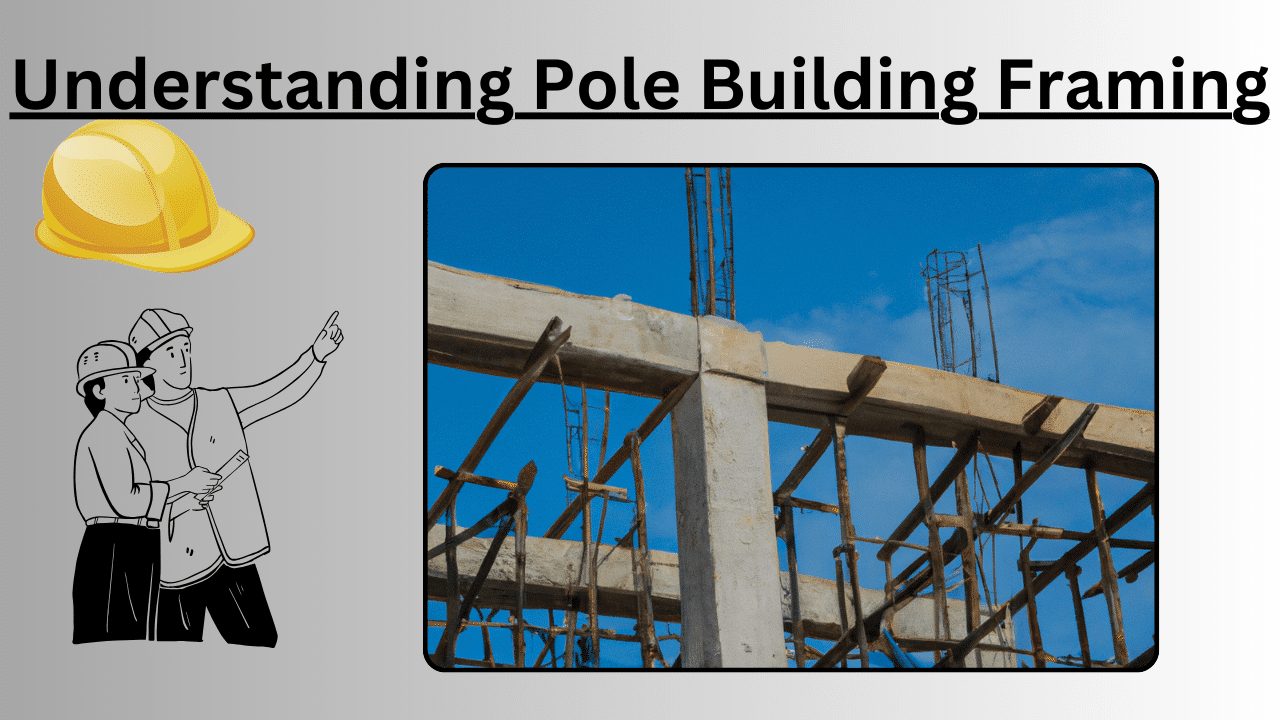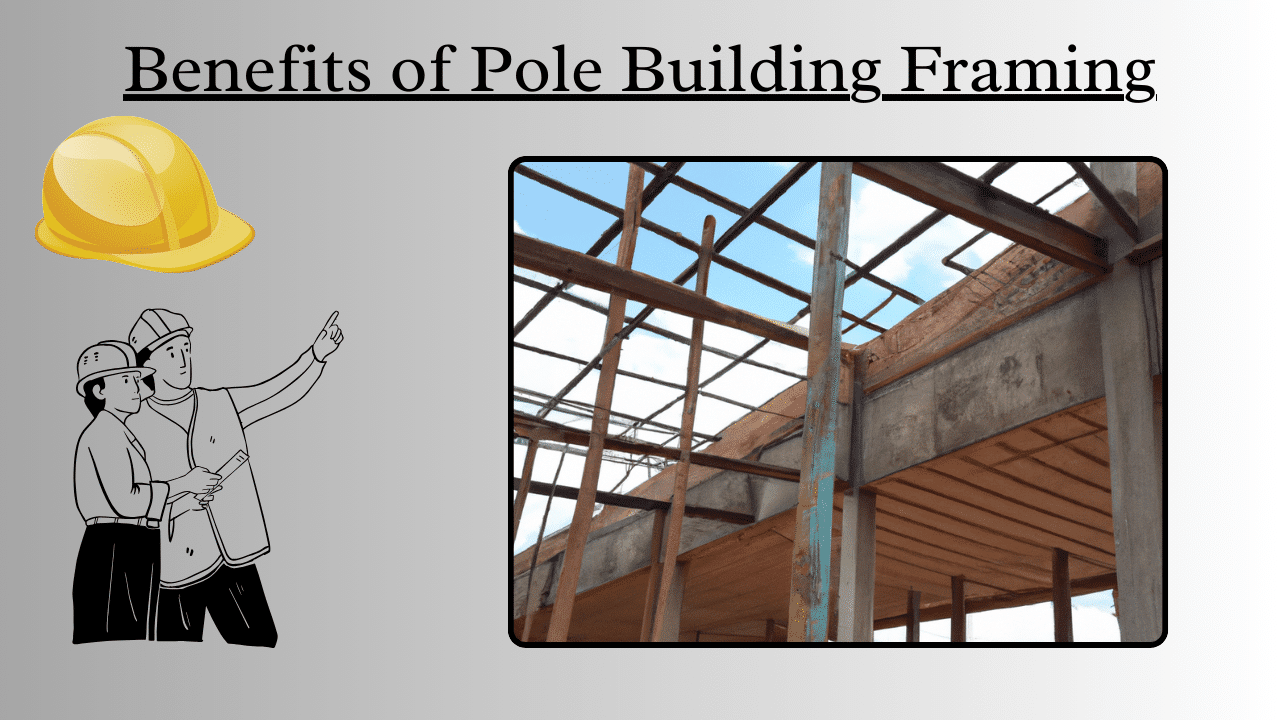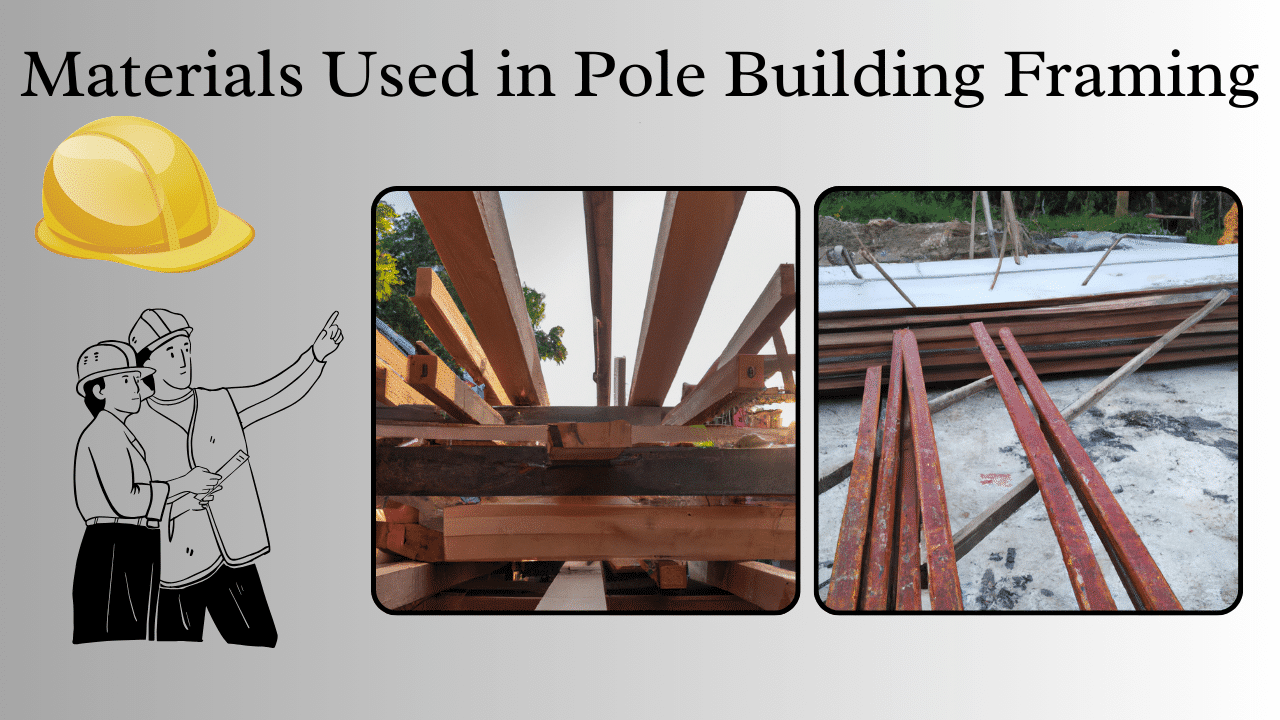Pole building framing is sometimes referred to as post-frame construction. it is a unique and multilateral method that has achieved popularity in various construction projects. In simple terms, involves the use of vertical posts or poles to provide structural support for the building. Let’s go into the world of pole-building framing and explore its history, benefits, materials, and much more.
History of Pole Building Framing
Pole building frame has historical roots that may be traced back to the need for economical and efficient building techniques. It has changed and adapted to many geographical locations throughout time, becoming a mainstay in certain places due to its usefulness and simplicity.
Understanding Pole Building Framing
“What is a pole building?”
Pole building, also known as post-frame construction, is made by the use of vertical poles or posts anchored to the ground to support the building’s weight. This method eliminates the need for a continuous foundation, providing flexibility in construction.
The Importance of Framing in Construction
Framing is the basic strength of any structure, determining its stability and longevity. In pole-building framing, the focus is on utilizing strategically placed poles to create a robust and reliable framework.
Different Styles of Pole Buildings:
There are some styles of pole buildings, each designed to meet specific needs. Common styles are :
Pole Barns: Simple structures with open sides, mainly used for agricultural storage or as livestock shelters.
Pole Sheds: Similar to pole barns but may have enclosed sides for added protection.
Pole Garages: Designed for vehicle storage and often include enclosed spaces for tools or a workspace.
Pole Homes: Residential structures built using pole construction methods, offering a cost-effective alternative to traditional homes.
Ideal Size for a Pole Building
The best size for a pole building depends on its intended use. Pole buildings can range from small structures, such as garages or sheds, to large barns or warehouses. Considerations like functionality, available space, and future needs should guide the decision on size.
Benefits of Pole Building Framing
Cost-Effectiveness
Pole building is renowned for its cost-effectiveness, as it minimizes the need for extensive foundation work. This can result in significant savings compared to traditional construction methods.
Quick Construction Turnaround
The simplicity of pole building allows for faster construction, making it an ideal choice when time is of the essence. Quick turnaround can be crucial for various projects, from agricultural buildings to storage structures.
Durability and Stability
Despite its simplicity, pole building provides exceptional durability and stability. The strategic placement of poles ensures the structural integrity of the building, even in adverse weather conditions.
Materials Used in Pole Building Framing
Treated Wood Poles
Wood poles, often pressure-treated for durability, are a common choice in pole building. Their versatility and availability make them a practical option for various construction projects.
Steel Components
Incorporating steel components, such as trusses and brackets, enhances the strength and longevity of pole buildings. This combination of wood and steel creates a resilient framework.
Roofing Options
Pole buildings offer diverse roofing options, from traditional shingles to metal roofing. The choice depends on the climate, intended use, and aesthetic preferences.
Design Considerations
When planning a pole building, careful consideration must be given to the layout and foundation. Proper planning ensures the stability of the structure and optimizes the functionality of the space. Exploring different foundation options is crucial for achieving a well-balanced, long-lasting pole building.
Construction Process
Site Preparation
Before construction begins, proper site preparation is essential. This includes clearing the area, leveling the ground, and ensuring adequate drainage to prevent water damage.
Pole Installation
The installation of poles is a critical step. Poles must be firmly anchored to provide the necessary support for the entire structure. Proper spacing and alignment are crucial for a stable framework.
Framing the Structure
Framing involves connecting the horizontal and vertical elements to create the skeleton of the building. This phase requires precision and attention to detail to ensure a solid and stable framework.
Roofing and Siding
The choice of roofing and siding materials plays a significant role in the building’s durability and aesthetics. Proper installation is crucial to prevent leaks and other weather-related issues.
Applications of Pole Building
Agricultural Buildings
Pole-building framing is widely used in agricultural construction, providing farmers with cost-effective and practical solutions for barns, storage facilities, and livestock shelters.
Residential Structures
The versatility of pole building extends to residential construction, offering homeowners an efficient and customizable option for houses, garages, and workshops.
Commercial and Industrial Usage
Businesses benefit from pole-building framing in the construction of warehouses, workshops, and industrial structures. The quick turnaround time is advantageous for minimizing downtime.
Comparing Pole Building with Traditional Framing
Cost Comparison
Pole building often proves more economical than traditional framing methods, making it an attractive choice for budget-conscious projects.
Time Efficiency
The simplified construction process of pole building translates to quicker project completion, providing a distinct advantage over traditional framing timelines.
Sustainability
Pole building’s efficient use of materials and reduced foundation requirements contribute to its environmental sustainability compared to traditional construction.
Maintenance Tips for Pole Structures
Inspecting Poles Regularly
Regular inspections are crucial to identify any signs of wear, damage, or pest infestation. Early detection allows for timely repairs, preventing further issues.
Addressing Weathering Issues
Pole structures are exposed to the elements, making weathering a concern. Applying protective coatings and addressing any weather-related damage promptly is essential for longevity.
Challenges in Pole Building Framing
Weather Sensitivity
Pole buildings can be sensitive to extreme weather conditions. Proper design and construction considerations are necessary to ensure resilience against adverse elements.
Permits and Zoning
Navigating local building permits and zoning regulations can be challenging. Understanding and complying with these requirements is essential for a smooth construction process.
Maintenance Considerations
While pole buildings require less maintenance than traditional structures, overlooking necessary upkeep can lead to issues over time. Regular maintenance is key to ensuring longevity.
Environmental Impact and Sustainability
The Role of Renewable Resources
Pole building’s reliance on wood, a renewable resource, contributes to its sustainability. Using responsibly sourced materials further enhances its environmental impact.
Carbon Footprint Comparison
Comparing the carbon footprint of pole building to traditional framing methods reveals its potential to be a more environmentally friendly option, thanks to reduced material usage and transportation.
Innovation in Pole Building Technology
Advanced Construction Techniques
Technological advancements in construction techniques continue to enhance pole building. Innovations such as pre-engineered components streamline the construction process.
Technological Integration
The integration of technology, such as smart building systems and energy-efficient solutions, positions pole building as a modern and forward-thinking construction method.
Popular Pole Building Designs
Explore different pole-building designs, such as the monitor style, gambrel style, and Quonset hut style. Each design offers unique aesthetics and functionality, allowing individuals to choose a style that suits their preferences and needs.
Case Studies: Successful Pole Building Projects
Notable Examples
Highlighting successful pole-building projects showcases the versatility and effectiveness of this construction method in real-world applications.
Lessons Learned
Examining case studies provides valuable insights into best practices and potential challenges, aiding future pole-building projects.
Future Trends in Pole Building Framing
Technological Advancements
As technology evolves, so does the potential for more advanced and efficient pole-building techniques. Stay tuned for innovations that could reshape the industry.
Sustainability Innovations
The demand for sustainable construction practices may drive further innovations in pole-building materials and techniques, aligning with environmental priorities.
Challenges and Solutions
While pole-building framing offers numerous advantages, it’s essential to be aware of potential challenges. Understanding common issues and implementing effective solutions ensures the success and longevity of pole-building projects.
Conclusion
In conclusion, pole building framing offers a cost-effective, durable, and customizable solution for various construction needs. Whether for agricultural, storage, or residential purposes, the versatility of this method makes it a compelling choice. Consider the benefits and unique features of pole-building framing for your next construction project.
Frequently Asked Questions (FAQs)
1. Are pole buildings only suitable for rural or agricultural settings?
No, pole buildings are versatile and can be used in various settings, including residential and commercial applications.
2. Is pole building suitable for residential homes?
Yes, pole building is a versatile option for residential structures, offering cost-effective and customizable solutions.
3. What maintenance is required for a pole building?
Regular inspections, addressing any issues promptly, and routine maintenance of roofing and poles are essential.
4. How does the cost of pole building compare to traditional framing?
Pole building often proves more economical due to reduced foundation requirements and quicker construction timelines.
5. Can pole buildings withstand extreme weather conditions?
Proper design considerations can enhance the resilience of pole buildings against adverse weather elements.
6. Are there any zoning issues with pole building construction?
Navigating local building permits and zoning regulations is necessary to ensure compliance and a smooth construction process.
7. How does pole-building framing contribute to environmental sustainability?
Using renewable materials and efficient construction processes reduces the environmental impact compared to some traditional building methods.
8. Can pole buildings withstand extreme weather conditions?
Yes, the durability and strength of pole buildings make them resilient in diverse weather conditions.
9. Are there any limitations to pole-building framing?
While highly versatile, pole-building framing may have limitations in extremely large or complex structures; it’s crucial to consult with a professional for specific projects.




